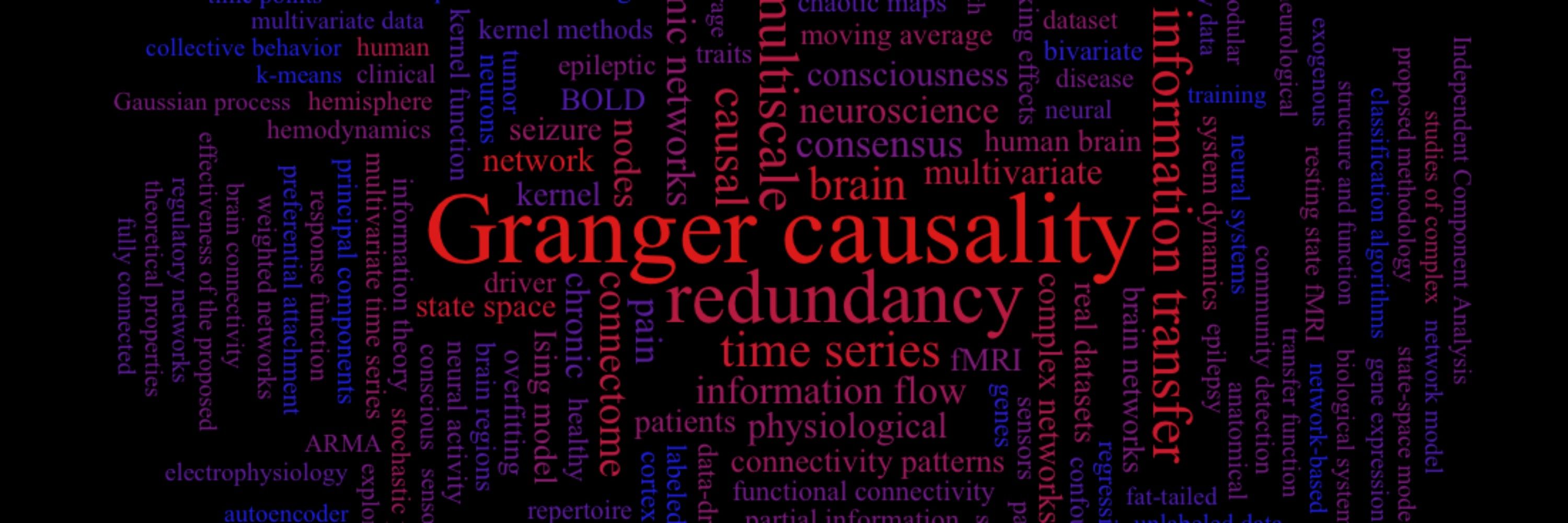
Daniele Marinazzo
@danielemarinazzo.bsky.social
Computational neuroscientist and complexity scientist. Professor at Ghent University.
Combo of two papers on partial information rate decomposition now out!
journals.aps.org/prl/abstract...
journals.aps.org/pre/abstract...
Mini thread below 👇
journals.aps.org/prl/abstract...
journals.aps.org/pre/abstract...
Mini thread below 👇
Partial Information Rate Decomposition
Partial information decomposition (PID) is a principled and flexible method to unveil complex high-order interactions in multiunit network systems. Though being defined exclusively for random variable...
journals.aps.org
October 30, 2025 at 10:12 AM
Combo of two papers on partial information rate decomposition now out!
journals.aps.org/prl/abstract...
journals.aps.org/pre/abstract...
Mini thread below 👇
journals.aps.org/prl/abstract...
journals.aps.org/pre/abstract...
Mini thread below 👇
Reposted by Daniele Marinazzo
ok, imagine you have an oscillation that is not symmetric around 0 (small direct current shift) with some amplitude modulation, for instance with 1/f-dynamics.
➡️ then these 1/f-dynamics will show up in low frequency part of spectrum (red); in addition to around oscillation peak (yellow).
➡️ then these 1/f-dynamics will show up in low frequency part of spectrum (red); in addition to around oscillation peak (yellow).
October 16, 2025 at 1:58 PM
ok, imagine you have an oscillation that is not symmetric around 0 (small direct current shift) with some amplitude modulation, for instance with 1/f-dynamics.
➡️ then these 1/f-dynamics will show up in low frequency part of spectrum (red); in addition to around oscillation peak (yellow).
➡️ then these 1/f-dynamics will show up in low frequency part of spectrum (red); in addition to around oscillation peak (yellow).
I find this paper really confusing. There are several measures (power, coherence, network communication, information based statistical dependencies) which are all measures of the "behavior" of the system, and definitely share similarities. Yet some are considered "mechanisms" underlying the others.
Evaluating oscillatory mechanisms underlying flexible neural communication in the human brain https://www.biorxiv.org/content/10.1101/2025.10.16.682957v1
October 17, 2025 at 7:39 AM
I find this paper really confusing. There are several measures (power, coherence, network communication, information based statistical dependencies) which are all measures of the "behavior" of the system, and definitely share similarities. Yet some are considered "mechanisms" underlying the others.
Reposted by Daniele Marinazzo
arxiv.org/abs/2509.15278 check that your metadata are 'private' i.e. that they do not leak personal information -- BIDSapp available 😀

Assessing metadata privacy in neuroimaging
The ethical and legal imperative to share research data without causing harm requires careful attention to privacy risks. While mounting evidence demonstrates that data sharing benefits science, legit...
arxiv.org
September 22, 2025 at 7:13 AM
arxiv.org/abs/2509.15278 check that your metadata are 'private' i.e. that they do not leak personal information -- BIDSapp available 😀
Reposted by Daniele Marinazzo
A birthday is a good time to reflect! To mark SPM @ 30, this month's issue of Cerebral Cortex features deeply insightful commentaries on neuroimaging analysis from Ed Bullmore, Peter Bandettini, Peter Fox, Pedro Valdes-Sosa, Klaas Enno Stephan, Viktor Jirsa, et al [1/2] academic.oup.com/cercor/issue

Issues | Cerebral Cortex | Oxford Academic
Publishes papers on the development, organization, plasticity, and function of the cerebral cortex, including the hippocampus.
academic.oup.com
September 16, 2025 at 8:16 AM
A birthday is a good time to reflect! To mark SPM @ 30, this month's issue of Cerebral Cortex features deeply insightful commentaries on neuroimaging analysis from Ed Bullmore, Peter Bandettini, Peter Fox, Pedro Valdes-Sosa, Klaas Enno Stephan, Viktor Jirsa, et al [1/2] academic.oup.com/cercor/issue
Reposted by Daniele Marinazzo
BeyondTheEdge at the School of Complexity on "Higher-order interactions: mechanisms, behaviors, and networks" by our own @lordgrilo.bsky.social and @gin-bianconi.bsky.social with @aliceschwarze.bsky.social, @danielemarinazzo.bsky.social. Great perspectives! www.beyondtheedge.network/articles/bey...

BeyondTheEdge goes to Sicily
BeyondTheEdge researchers participated in the School of Complexity on
www.beyondtheedge.network
September 8, 2025 at 7:08 AM
BeyondTheEdge at the School of Complexity on "Higher-order interactions: mechanisms, behaviors, and networks" by our own @lordgrilo.bsky.social and @gin-bianconi.bsky.social with @aliceschwarze.bsky.social, @danielemarinazzo.bsky.social. Great perspectives! www.beyondtheedge.network/articles/bey...
Reposted by Daniele Marinazzo
I'm specifically sharing this paper because I saw a post recently that said people who think about methodology are "attacking authors"
Do students learn to think like researchers? 🧪 Our study found psych majors judged study quality & designed research using sound criteria. High achievers also reflected on why methods matter. More evidence for teaching epistemic reflection.
#PsychSciSky #AcademicSky #EduSky
#PsychSciSky #AcademicSky #EduSky

College Undergraduates’ Use of Epistemic Criteria and Strategies While Designing Psychology Research Studies
Barzilai and Chinn (2018) have advocated for framing education more overtly around epistemic matters to help students learn how to create worthwhile epistemic aims, which they achieve by using appr...
doi.org
September 1, 2025 at 3:59 PM
I'm specifically sharing this paper because I saw a post recently that said people who think about methodology are "attacking authors"
"Brief segments of neurophysiological activity enable individual differentiation", but also when the neurophysiological activity (MEG data) is identical for all the subjects, we have the same differentiation.
Because of the head shape, of course.
pubpeer.com/publications...
Because of the head shape, of course.
pubpeer.com/publications...
PubPeer - Brief segments of neurophysiological activity enable individ...
There are comments on PubPeer for publication: Brief segments of neurophysiological activity enable individual differentiation (2021)
pubpeer.com
August 27, 2025 at 10:58 AM
"Brief segments of neurophysiological activity enable individual differentiation", but also when the neurophysiological activity (MEG data) is identical for all the subjects, we have the same differentiation.
Because of the head shape, of course.
pubpeer.com/publications...
Because of the head shape, of course.
pubpeer.com/publications...
Reposted by Daniele Marinazzo
🚨New preprint from the Dugué Lab!
Happy to share our last work on #attention_rhythms, co-led by @cogsenoussi.bsky.social & former Dugué Lab PhD student @lauriegalas.bsky.social, and in collab with Niko Busch 🎉
@upcite.bsky.social | @erc.europa.eu | #neuroskyence
www.biorxiv.org/content/10.1...
Happy to share our last work on #attention_rhythms, co-led by @cogsenoussi.bsky.social & former Dugué Lab PhD student @lauriegalas.bsky.social, and in collab with Niko Busch 🎉
@upcite.bsky.social | @erc.europa.eu | #neuroskyence
www.biorxiv.org/content/10.1...
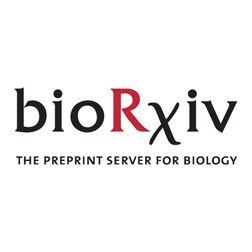
Theta-rhythmic attentional exploration of space
Attention facilitates stimulus processing by selecting specific locations (spatial attention) or features (feature-based attention). It can be sustained on a given location or feature, or re-oriented ...
www.biorxiv.org
August 17, 2025 at 8:59 AM
🚨New preprint from the Dugué Lab!
Happy to share our last work on #attention_rhythms, co-led by @cogsenoussi.bsky.social & former Dugué Lab PhD student @lauriegalas.bsky.social, and in collab with Niko Busch 🎉
@upcite.bsky.social | @erc.europa.eu | #neuroskyence
www.biorxiv.org/content/10.1...
Happy to share our last work on #attention_rhythms, co-led by @cogsenoussi.bsky.social & former Dugué Lab PhD student @lauriegalas.bsky.social, and in collab with Niko Busch 🎉
@upcite.bsky.social | @erc.europa.eu | #neuroskyence
www.biorxiv.org/content/10.1...
Reposted by Daniele Marinazzo
Finally out on Nat Comms 🚀
We show that an intrinsic motivational learning signal (information gain) is encoded through synergistic and higher-order functional brain interactions and is broadcast to prefrontal reward circuits.
We show that an intrinsic motivational learning signal (information gain) is encoded through synergistic and higher-order functional brain interactions and is broadcast to prefrontal reward circuits.
https://www.nature.com/articles/s41467-025-62507-1
t.co
August 10, 2025 at 10:39 AM
Finally out on Nat Comms 🚀
We show that an intrinsic motivational learning signal (information gain) is encoded through synergistic and higher-order functional brain interactions and is broadcast to prefrontal reward circuits.
We show that an intrinsic motivational learning signal (information gain) is encoded through synergistic and higher-order functional brain interactions and is broadcast to prefrontal reward circuits.
Localizing Synergies of Hidden Factors in Complex Systems: Resting Brain Networks and HeLa Gene Expression Profile as Case Studies
www.mdpi.com/1099-4300/27...
www.mdpi.com/1099-4300/27...

August 1, 2025 at 4:18 PM
Localizing Synergies of Hidden Factors in Complex Systems: Resting Brain Networks and HeLa Gene Expression Profile as Case Studies
www.mdpi.com/1099-4300/27...
www.mdpi.com/1099-4300/27...
Reposted by Daniele Marinazzo
🧠 𝗦𝘁𝗼𝗽 𝘂𝘀𝗶𝗻𝗴 𝗿𝗮𝘄 𝗘𝗘𝗚 𝗰𝗵𝗮𝗻𝗻𝗲𝗹𝘀 - 𝗵𝗲𝗿𝗲'𝘀 𝘄𝗵𝘆
New research with 1,024 brain electrodes proves EEG channels DON'T reflect local brain activity underneath the electrode.
paper: https://www.biorxiv.org/content/10.1101/2025.06.24.660870v1
#Neuroscience #EEG #BrainResearch
New research with 1,024 brain electrodes proves EEG channels DON'T reflect local brain activity underneath the electrode.
paper: https://www.biorxiv.org/content/10.1101/2025.06.24.660870v1
#Neuroscience #EEG #BrainResearch
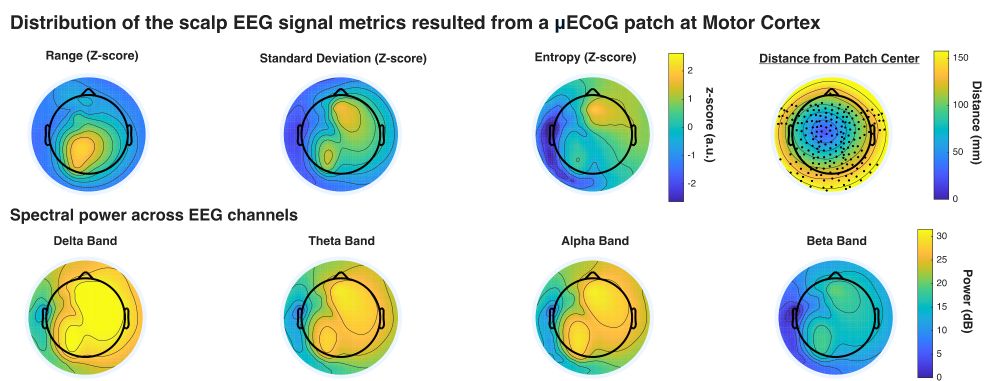
July 15, 2025 at 3:54 PM
🧠 𝗦𝘁𝗼𝗽 𝘂𝘀𝗶𝗻𝗴 𝗿𝗮𝘄 𝗘𝗘𝗚 𝗰𝗵𝗮𝗻𝗻𝗲𝗹𝘀 - 𝗵𝗲𝗿𝗲'𝘀 𝘄𝗵𝘆
New research with 1,024 brain electrodes proves EEG channels DON'T reflect local brain activity underneath the electrode.
paper: https://www.biorxiv.org/content/10.1101/2025.06.24.660870v1
#Neuroscience #EEG #BrainResearch
New research with 1,024 brain electrodes proves EEG channels DON'T reflect local brain activity underneath the electrode.
paper: https://www.biorxiv.org/content/10.1101/2025.06.24.660870v1
#Neuroscience #EEG #BrainResearch
Reposted by Daniele Marinazzo
Preprint: Equations/generalizations for TC, DTC, RSI, O-information, and TSE-complexity for multivar real/cmplx data. How “connections” contribute to system inf measures.
Helpful comments and reports on errors are appreciated.
arXiv: 2025-07-11
doi.org/10.48550/arXiv.2507.08773
Helpful comments and reports on errors are appreciated.
arXiv: 2025-07-11
doi.org/10.48550/arXiv.2507.08773

July 15, 2025 at 5:18 AM
Preprint: Equations/generalizations for TC, DTC, RSI, O-information, and TSE-complexity for multivar real/cmplx data. How “connections” contribute to system inf measures.
Helpful comments and reports on errors are appreciated.
arXiv: 2025-07-11
doi.org/10.48550/arXiv.2507.08773
Helpful comments and reports on errors are appreciated.
arXiv: 2025-07-11
doi.org/10.48550/arXiv.2507.08773
Reposted by Daniele Marinazzo
There are some corners of the network science literature which adamantly claim that connected components *must* belong to different communities. Yet, ER networks can easily be disconnected, and the same is true for individual groups in SBM networks. There, splitting the components overfits. 1/4
July 11, 2025 at 5:49 AM
There are some corners of the network science literature which adamantly claim that connected components *must* belong to different communities. Yet, ER networks can easily be disconnected, and the same is true for individual groups in SBM networks. There, splitting the components overfits. 1/4
But are they behaviors?
physics.aps.org/articles/v18...
physics.aps.org/articles/v18...
July 8, 2025 at 6:10 PM
But are they behaviors?
physics.aps.org/articles/v18...
physics.aps.org/articles/v18...
Reposted by Daniele Marinazzo
"The analysis of the L.L.M. users showed fewer widespread connections between different parts of their brains"
This is goddamn embarrassing, man. Instructive for understanding just how bad media is on this. Like there are anatomical changes being measured.
www.newyorker.com/culture/infi...
This is goddamn embarrassing, man. Instructive for understanding just how bad media is on this. Like there are anatomical changes being measured.
www.newyorker.com/culture/infi...

A.I. Is Homogenizing Our Thoughts
Recent studies suggest that tools such as ChatGPT make our brains less active and our writing less original.
www.newyorker.com
June 28, 2025 at 7:02 PM
"The analysis of the L.L.M. users showed fewer widespread connections between different parts of their brains"
This is goddamn embarrassing, man. Instructive for understanding just how bad media is on this. Like there are anatomical changes being measured.
www.newyorker.com/culture/infi...
This is goddamn embarrassing, man. Instructive for understanding just how bad media is on this. Like there are anatomical changes being measured.
www.newyorker.com/culture/infi...
Reposted by Daniele Marinazzo
Fantastic collaboration with @teo121270.bsky.social L.Giambagli R.Muolo "Global Topological Dirac Synchronization": Unveiling new dynamical states of higher-order networks with the Topological Dirac operator.
iopscience.iop.org/article/10.1... @ioppublishing.bsky.social
iopscience.iop.org/article/10.1... @ioppublishing.bsky.social
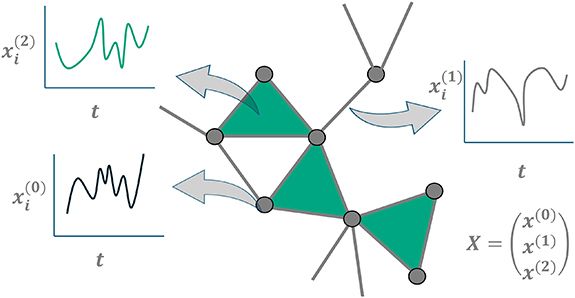
June 24, 2025 at 6:50 PM
Fantastic collaboration with @teo121270.bsky.social L.Giambagli R.Muolo "Global Topological Dirac Synchronization": Unveiling new dynamical states of higher-order networks with the Topological Dirac operator.
iopscience.iop.org/article/10.1... @ioppublishing.bsky.social
iopscience.iop.org/article/10.1... @ioppublishing.bsky.social
Reposted by Daniele Marinazzo
happy that our article about mu & alpha rhythm waveform shape in development is now finally out in the open: doi.org/10.1162/jocn...
oscillation frequency changes across development (one of the most robust findings in the oscillation world). in this work, we also look at waveform shape changes.
oscillation frequency changes across development (one of the most robust findings in the oscillation world). in this work, we also look at waveform shape changes.
June 23, 2025 at 3:36 PM
happy that our article about mu & alpha rhythm waveform shape in development is now finally out in the open: doi.org/10.1162/jocn...
oscillation frequency changes across development (one of the most robust findings in the oscillation world). in this work, we also look at waveform shape changes.
oscillation frequency changes across development (one of the most robust findings in the oscillation world). in this work, we also look at waveform shape changes.
Reposted by Daniele Marinazzo
The beta release of SPM-Python is out now! Amazing work by Johan Medrano @johmedr.bsky.social , Yael Balbastre, Yulia Bezsudnova @ybezs.bsky.social and other members of their team. A new era for SPM! #OHBM2025
Drumroll... The SPM team will announce that SPM is now fully accessible from Python! 🐍 Learn more about SPM-Python at the SPM roundtable event (Friday, 1pm) and poster number 1841 at #OHBM2025. Try the beta for yourself at github.com/spm/spm-python [2/7]
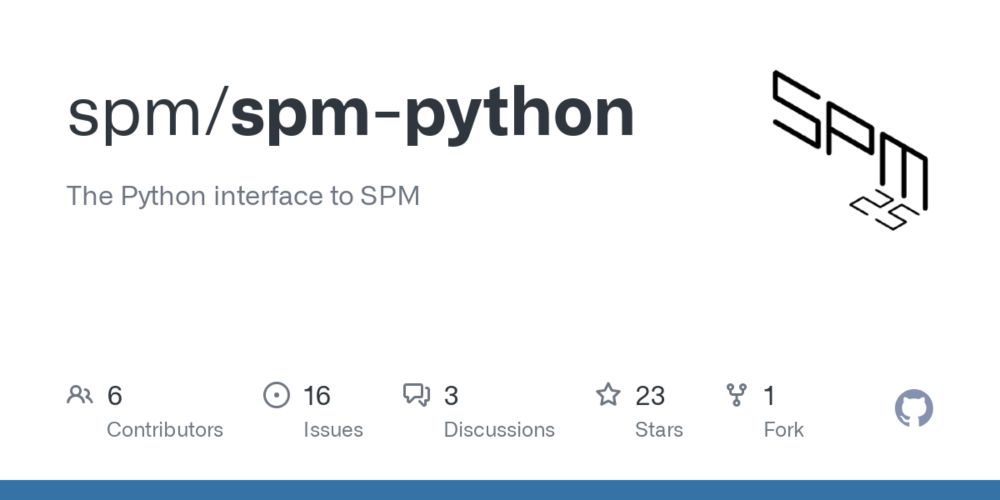
GitHub - spm/spm-python: The Python interface to SPM
The Python interface to SPM. Contribute to spm/spm-python development by creating an account on GitHub.
github.com
June 23, 2025 at 8:22 AM
The beta release of SPM-Python is out now! Amazing work by Johan Medrano @johmedr.bsky.social , Yael Balbastre, Yulia Bezsudnova @ybezs.bsky.social and other members of their team. A new era for SPM! #OHBM2025
Sorry this is inaccurate, this is a collider, thus a synergistic case

June 21, 2025 at 5:43 PM
Sorry this is inaccurate, this is a collider, thus a synergistic case
Reposted by Daniele Marinazzo
Episode #29 in #TheoreticalNeurosciencePodcast: On the philosophy of simplification in computational neuroscience - with Mazviita Chirimuuta and Terrence Sejnowski
theoreticalneuroscience.no/thn29
What are the pitfalls when simplifying? Panel debate at FENS meeting in Oslo. @fens.org
theoreticalneuroscience.no/thn29
What are the pitfalls when simplifying? Panel debate at FENS meeting in Oslo. @fens.org

June 21, 2025 at 7:10 AM
Episode #29 in #TheoreticalNeurosciencePodcast: On the philosophy of simplification in computational neuroscience - with Mazviita Chirimuuta and Terrence Sejnowski
theoreticalneuroscience.no/thn29
What are the pitfalls when simplifying? Panel debate at FENS meeting in Oslo. @fens.org
theoreticalneuroscience.no/thn29
What are the pitfalls when simplifying? Panel debate at FENS meeting in Oslo. @fens.org
Reposted by Daniele Marinazzo
the level of misinformation sparked because of this bananas EEG preprint is just really tragic.
By the way if you think that a researcher caused cognitive decline to happen to participants in a study you should probably be freaked out by that
By the way if you think that a researcher caused cognitive decline to happen to participants in a study you should probably be freaked out by that
June 20, 2025 at 8:33 PM
the level of misinformation sparked because of this bananas EEG preprint is just really tragic.
By the way if you think that a researcher caused cognitive decline to happen to participants in a study you should probably be freaked out by that
By the way if you think that a researcher caused cognitive decline to happen to participants in a study you should probably be freaked out by that
Localizing synergies of hidden factors across complex systems: resting brain networks and HeLa gene expression profile as case studies
arxiv.org/abs/2506.09053
arxiv.org/abs/2506.09053

June 12, 2025 at 8:40 AM
Localizing synergies of hidden factors across complex systems: resting brain networks and HeLa gene expression profile as case studies
arxiv.org/abs/2506.09053
arxiv.org/abs/2506.09053
Reposted by Daniele Marinazzo
Fusing multisensory signals across channels and time.
Now published at PLOS Comp Biol! 🎉 With @swathianil.bsky.social and @marcusghosh.bsky.social.
journals.plos.org/ploscompbiol...
TLDR, when multisensory signals vary over time, neural architecture becomes important. Biggest not always best.
Now published at PLOS Comp Biol! 🎉 With @swathianil.bsky.social and @marcusghosh.bsky.social.
journals.plos.org/ploscompbiol...
TLDR, when multisensory signals vary over time, neural architecture becomes important. Biggest not always best.
June 10, 2025 at 3:21 PM
Fusing multisensory signals across channels and time.
Now published at PLOS Comp Biol! 🎉 With @swathianil.bsky.social and @marcusghosh.bsky.social.
journals.plos.org/ploscompbiol...
TLDR, when multisensory signals vary over time, neural architecture becomes important. Biggest not always best.
Now published at PLOS Comp Biol! 🎉 With @swathianil.bsky.social and @marcusghosh.bsky.social.
journals.plos.org/ploscompbiol...
TLDR, when multisensory signals vary over time, neural architecture becomes important. Biggest not always best.
Reposted by Daniele Marinazzo
Quick check of the paper mentioned here under and it's rather "opaque". 🤔
Key point IMO is confusing Maxwell's equations time dependence and brain waves time scale. Anisotropy and inhomogeneity in tissue conductivity is important but it lives very well with the "quasi-static approximation".
Key point IMO is confusing Maxwell's equations time dependence and brain waves time scale. Anisotropy and inhomogeneity in tissue conductivity is important but it lives very well with the "quasi-static approximation".
June 10, 2025 at 4:16 PM
Quick check of the paper mentioned here under and it's rather "opaque". 🤔
Key point IMO is confusing Maxwell's equations time dependence and brain waves time scale. Anisotropy and inhomogeneity in tissue conductivity is important but it lives very well with the "quasi-static approximation".
Key point IMO is confusing Maxwell's equations time dependence and brain waves time scale. Anisotropy and inhomogeneity in tissue conductivity is important but it lives very well with the "quasi-static approximation".


